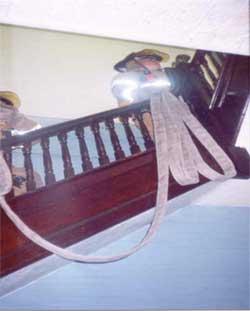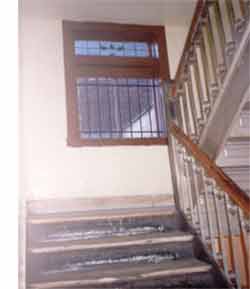“How many hoselines can we place in a stairwell?”
Many of us in the fire service have always heard that you can’t stretch more than two hoselines into and up a stairwell of a building. This statement has been presented and adopted by many as a disciplined procedure without any further explanation or exploration of its use. Often referred to as “fixed theories”, we find that if we take a more comprehensive look at the above quote and allow ourselves to size-up the situation, in many situations we can stretch more than two.
In certain building types you will find varying stair types and designs that need to be identified and factored into your resource assignment and management. Their design within a building cannot only identify some limitations, but also a few options that suppression forces can take advantage of. Let’s take a look.
When the building you are operating in presents a stair design with added options, identify if the stair design can assist you with your hose stretch. Depending upon the stairwell design within the building, there may be a possibility that you can stretch more than two hoselines up and into this vertical artery. In Jersey City, we identify hose stretches in multiple dwelling fires based on the stairwell design. They can fall into one of three categories:
- Stairway Stretch – This is a hose stretch that is placed within the thread/riser run of the stairwell. In this type of hose stretch we often factor in one hose length per floor with one additional length for the fire floor as a minimum. Its width often allows two hoselines to be stretched within. It is considered the most common type of hose stretch used in a multi-floored building.

(Figure # 1: well-hole stretch) - Well-Hole Stretch – This is a hose stretch that takes advantage of the horizontally spacing between the banister and railings of the stair design. If wide enough to place a charged hoseline in between, a hoseline can be stretched vertically up the well-hole to its intended floor/objective. In this type of hose stretch, we often factor in one length per three floors with an additional length for the fire floor as a minimum. It is important with this type stretch that we pull enough hose up for the fire floor, and then secure the remaining hose to the stair railing on the floor below. The weight of the hose and water within the vertical stretch can pull the hose out of the firefighters hands if not secured.
 |
| (Figure # 2: ½ landing window) |
- ½ Landing Stretch – If the building exhibits a U-return or a V-return stair design, the window at the ½ landing is an excellent place to stretch up an additional hoseline. If utilized, members should use the ½ landing just below the fire floor as the stairwell access point. This stretch utilizes a rope bag/bottle dropped out the ½ landing window into a courtyard, which allows a hoseline to be pulled back up into the same window. The windows location within the stair design not only provides a refuge point below the actual fire floor, its location will provide some assistance with the weight of the hose and the water. In this type of hose stretch, we often factor in one length per three floors with one additional length for the fire floor as a minimum.
With the above in mind, a “U” or “V” return stair in a multiple dwelling that has a wide enough well-hole and ½ landing window at each return, can allow trained and educated engine companies to stretch three, possibly four hoselines into and up this crucial artery.
Make your own decision, but don’t let someone’s quote limit your thinking. Stair designs can present additional options. Explore them and use them.
Stay Safe!
Michael A. Terpak
Deputy Chief, City of Jersey City
JCFD
